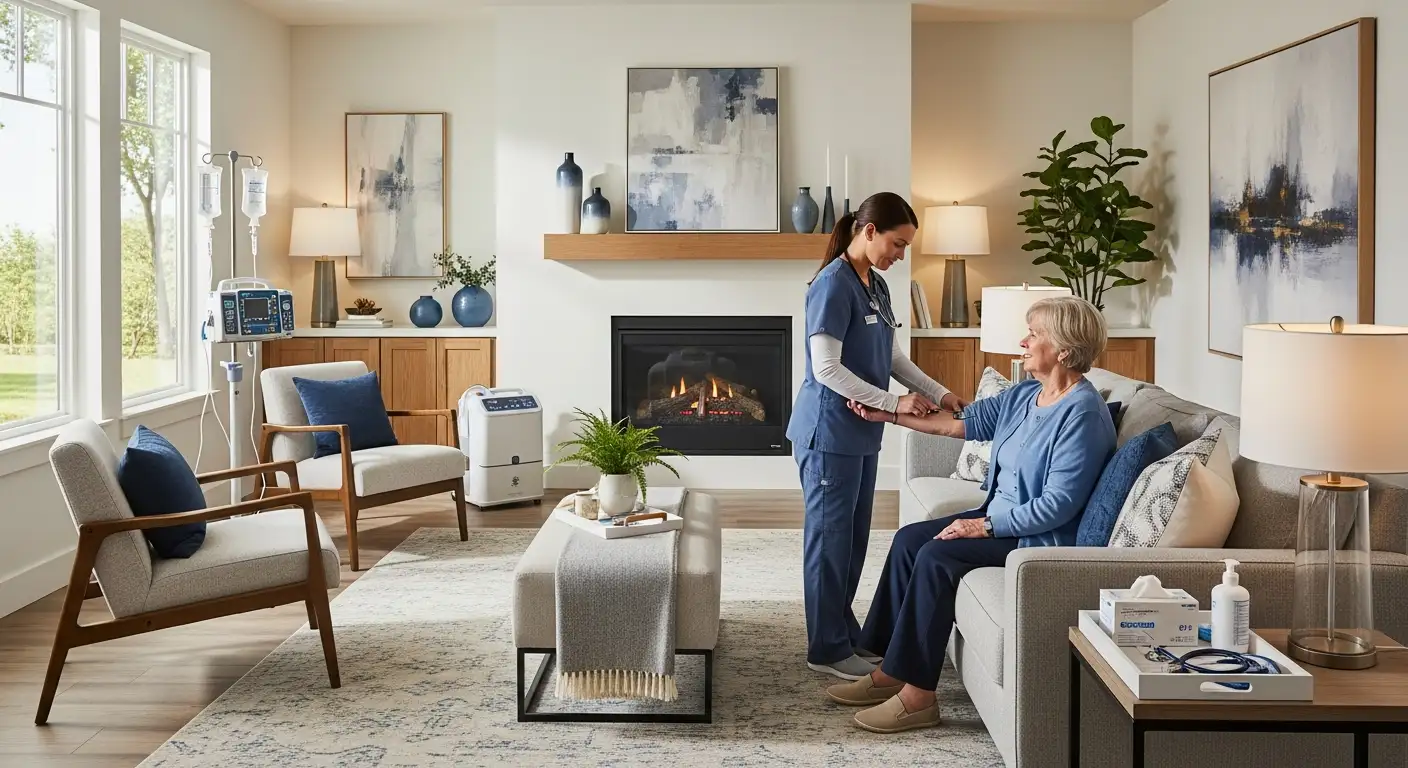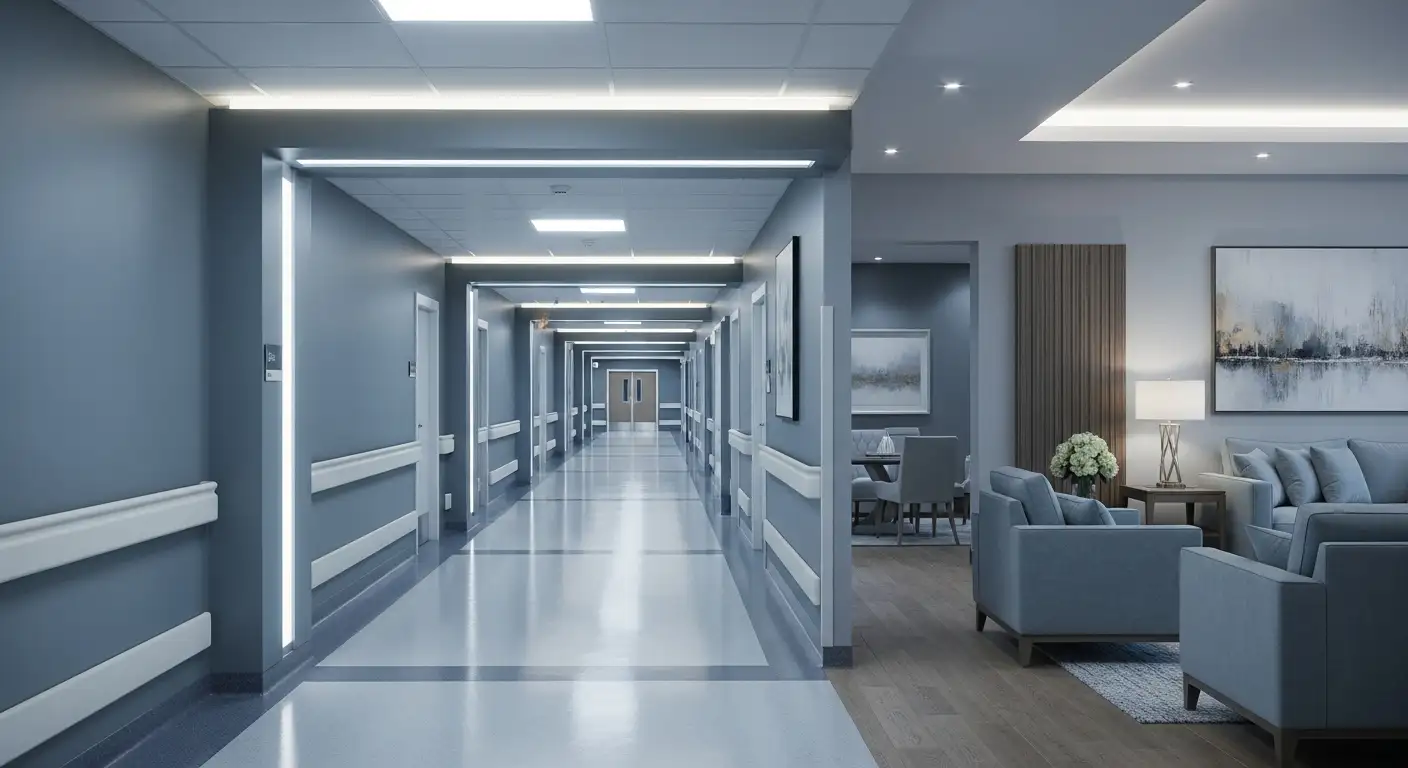Understanding Hallucinations in Elderly
As we delve into the topic of hallucinations in the elderly, it's essential to understand the nature of hallucinations and their prevalence among older adults.

Definition and Types of Hallucinations
Hallucinations are defined as perception-like experiences with the clarity and impact of actual perceptions, occurring without external sensory stimulation. This definition helps differentiate hallucinations from illusions, which involve the misperception or misinterpretation of external stimuli. The varied nature of hallucinations includes differences in content, character, duration, complexity, and quality across sensory modalities. These experiences are reported in individuals with sensory, neurological, medical, neurodegenerative, and psychological disorders, as well as in those without any mental disorders. The occurrence and prevalence of hallucinations vary depending on the underlying condition and the sensory modality involved [1].
Prevalence of Hallucinations in Elderly
Contrary to popular belief, hallucinations are not limited to youth and younger adults. Accumulating evidence shows that hallucinatory experiences are also present at high rates in healthy older adults in the general community. The prevalence of hallucinations, across sensory modalities, is lower in healthy older adults compared to younger individuals. However, in clinical disorders associated with older age, such as dementia and Parkinson's disease, hallucinations are more common, with specific prevalence rates varying by the condition, illness stage, and type of symptoms experienced [1].
In terms of numbers, the prevalence rates of hallucinations in older adults vary between 0.4% and 37%, with some studies reporting a decrease in prevalence with age and others reporting an increase.
Understanding these prevalence rates is crucial in identifying and addressing hallucinations in the elderly effectively. In the following sections, we will explore the causes of hallucinations in the elderly, discuss a prevalent syndrome known as Charles Bonnet Syndrome, and delve into their effects on health and ways to manage them.
Causes of Hallucinations in Elderly
Understanding the causes of hallucinations in the elderly can help to manage these occurrences and provide appropriate support. There are several potential causes, including medical and neurological conditions, the effects of prescription drugs, and sensory deprivation or sleep disturbances.
Medical and Neurological Conditions
Hallucinations in elderly individuals can be linked to a variety of medical, neurological, ocular, and psychiatric disorders. Visual hallucinations, for example, may relate to anomalies in almost any part of the visual pathway, indicating a broad differential diagnosis for this symptom.
One specific condition known to cause visual hallucinations is Charles Bonnet syndrome. This syndrome is characterized by visual hallucinations alongside deteriorating vision, usually occurring in elderly people. Charles Bonnet syndrome is a less frequently diagnosed but rather common cause of complex visual hallucinations, occurring in 10% to 15% of patients with visual impairment. The condition is more prevalent in elderly individuals, with age-related macular degeneration being the common condition leading to the syndrome, followed by glaucoma and cataract [3].
Prescription Drugs and Hallucinations
Certain prescription drugs can also lead to hallucinations in the elderly. Drug-induced hallucinations can occur as a side effect of medication, or as a result of withdrawal from certain substances. It's crucial to monitor medication use in the elderly and report any instances of hallucinations to a healthcare provider, who can adjust dosages or switch medications if necessary.

It's important to note that each individual's response to medication can vary, and what causes hallucinations in one person may not have the same effect on another. Regular medical check-ups and open communication with healthcare providers can help to manage and prevent drug-induced hallucinations.
Sensory Deprivation and Sleep Disturbances
Sensory deprivation, such as a loss or lack of sensory input, can also lead to hallucinations in the elderly. This can occur as a result of vision or hearing loss, or in situations where an individual is isolated and lacking social interaction.
Sleep disturbances, including conditions like insomnia or sleep apnea, can also contribute to hallucinations. Lack of sleep can cause the brain to function abnormally, leading to hallucinations in some cases.
Understanding the potential causes of hallucinations in the elderly is crucial for effective management and treatment. By identifying the underlying cause, healthcare providers can better tailor treatment plans to the individual's needs, helping to alleviate symptoms and improve quality of life.
Charles Bonnet Syndrome
As part of understanding hallucinations in the elderly, it's imperative to delve into Charles Bonnet Syndrome. This condition is characterized by visual hallucinations, which often occur alongside deteriorating vision, and primarily affects the elderly population.
Understanding Charles Bonnet Syndrome
Charles Bonnet Syndrome is a condition that is less frequently diagnosed but quite common among the elderly, occurring in 10% to 15% of patients with visual impairment. It is more prevalent in elderly individuals, with age-related macular degeneration being the common condition leading to the syndrome, followed by glaucoma and cataract [3].
The hallucinations experienced in Charles Bonnet Syndrome are well-formed, vivid, elaborate, and often stereotyped. Interestingly, patients typically have insight into the unreality of what they are seeing and do not exhibit features of psychosis, impaired sensorium, dementia, intoxication, metabolic derangement, or focal neurological illness. The correct diagnosis of this condition is crucial due to the serious implications of alternative diagnoses such as delirium, dementia, psychoses, or drug-related conditions.
Management of Charles Bonnet Syndrome
The course, prognosis, and treatment of Charles Bonnet Syndrome vary with the nature of visual dysfunction. Treatments with drugs remain unsatisfactory, with only anecdotal evidence for the efficacy of atypical antipsychotics and anticonvulsants.
However, non-pharmacological interventions have shown promising results. Increasing home lighting and reducing social isolation can be beneficial for patients with Charles Bonnet Syndrome. These interventions can help mitigate the vivid hallucinations, especially in individuals who have experienced vision loss [4].
Caregivers and healthcare providers must be aware of Charles Bonnet Syndrome as a potential cause of hallucinations in the elderly. Early identification and appropriate management can significantly improve the quality of life for affected individuals. As with any condition, the goal is not just to treat but to provide comprehensive care that addresses the physical, mental, and emotional needs of the patient.
Effect of Hallucinations on Health
Understanding the impact of hallucinations on health is crucial when considering elderly care. This section will focus on the relationship between hallucinations, cognitive decline, and the development of dementia in older adults.

Hallucinations and Cognitive Decline
Hallucinations, particularly visual ones, have been associated with an increased risk of cognitive decline among elderly individuals. In a study conducted by Jackson and colleagues, they found a significant link between visual hallucinations and cognitive deterioration. This decline is not only concerning for the individual's mental health but also poses challenges for their overall care and wellbeing.
Hallucinations can stem from various medical, neurological, ocular, and psychiatric disorders, as well as drug-induced states. These hallucinations may indicate anomalies in almost any part of the visual pathway, suggesting a broad differential diagnosis for this symptom.
Hallucinations and Development of Dementia
Hallucinations, particularly those of a visual nature, can also be an early sign of dementia in the elderly. The study mentioned earlier by Jackson and colleagues also found a correlation between visual hallucinations and the onset of dementia. This underlines the necessity for early detection and intervention in cases of hallucinations in the elderly.
One condition that characterizes visual hallucinations in the elderly is Charles Bonnet syndrome. Patients with this syndrome typically have insight into the unreality of what they are seeing and do not exhibit features of psychosis, impaired sensorium, dementia, intoxication, metabolic derangement, or focal neurological illness [3]. However, correct diagnosis of Charles Bonnet syndrome is crucial due to the serious implications of alternative diagnoses such as delirium, dementia, psychoses, or drug-related conditions.
The identification of psychotic symptoms in the elderly can be obscured by the presence of multiple medical illnesses and medications. In particular, visual hallucinations may be more common in elderly patients when the psychosis is secondary to a medical condition such as Parkinson's disease. Delirium, an acute, reversible state of confusion, is often unrecognized or misdiagnosed in the elderly and requires identification and treatment of underlying causative factors.
Understanding the impact of hallucinations on cognitive decline and dementia development is critical in providing effective care and treatment for elderly individuals experiencing these symptoms. This understanding allows healthcare providers to implement appropriate interventions and improve the quality of life for these individuals.
Managing Hallucinations in Elderly
The management of hallucinations in the elderly is a complex process that requires a comprehensive and multi-faceted approach. The most effective strategies often involve multidisciplinary treatment plans and the active involvement of healthcare providers.
Multidisciplinary Approach to Treatment
Addressing hallucinations in the elderly, particularly visual ones, involves a multi-disciplinary approach. This includes a thorough medication review to identify and adjust any drugs that may be contributing to the hallucinations. In addition, any sensory deficits, such as vision or hearing loss, should be corrected where possible. Environmental modifications can also be made to reduce triggers and provide a more stable, reassuring environment for the individual [5].
For those experiencing hallucinations as a result of Charles Bonnet Syndrome, a condition that can cause vivid hallucinations in individuals who have experienced vision loss, specific measures may be required. These could include reassurance, explanation of the syndrome, and practical strategies to manage the hallucinations.
Role of Healthcare Providers
Healthcare providers play a critical role in managing hallucinations in the elderly. This is particularly relevant in long-term care settings, where residents may be more susceptible to experiencing hallucinations. Prevalence rates for visual hallucinations in older adults range from 11% to 21% in the community, but can be as high as 71% in long-term care facilities.
As such, healthcare providers in these settings need to be well-educated on identifying, evaluating, and managing hallucinations in elderly residents. This includes understanding the various potential causes, which can range from medication side effects and sensory deprivation, to sleep disturbances and neurodegenerative diseases.
Furthermore, healthcare providers can offer crucial support and reassurance to both the individual experiencing the hallucinations and their family members or caregivers. They can explain the nature of the hallucinations, discuss potential triggers, and provide guidance on managing and reducing the frequency and intensity of the hallucinations. They can also recommend or provide access to resources such as support groups, counseling, and other therapeutic options.
In conclusion, managing hallucinations in the elderly is a complex process that requires a comprehensive and multifaceted approach. With the right support and treatment, however, it is possible to significantly enhance the quality of life for individuals experiencing these challenging symptoms.
References
[1]: https://www.ncbi.nlm.nih.gov/pmc/articles/PMC7707075/
[2]: https://www.ncbi.nlm.nih.gov/pmc/articles/PMC5500657/
[3]: https://www.ncbi.nlm.nih.gov/pmc/articles/PMC437154/
[4]: https://seniorservicesofamerica.com/blog/how-to-deal-with-hallucinations-in-the-elderly/
[5]: https://www.hmpgloballearningnetwork.com/site/altc/articles/visual-hallucinations-long-term-care



